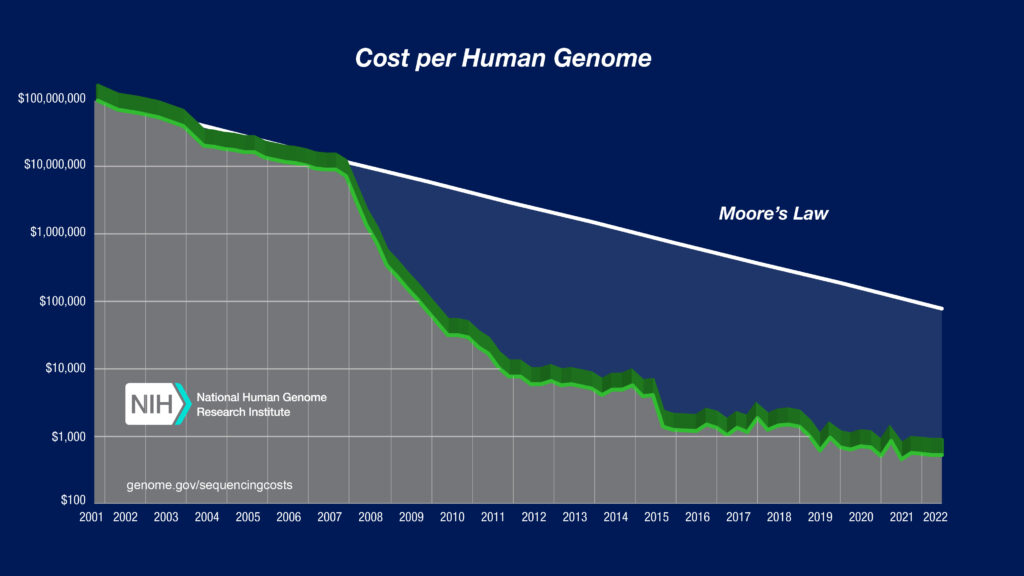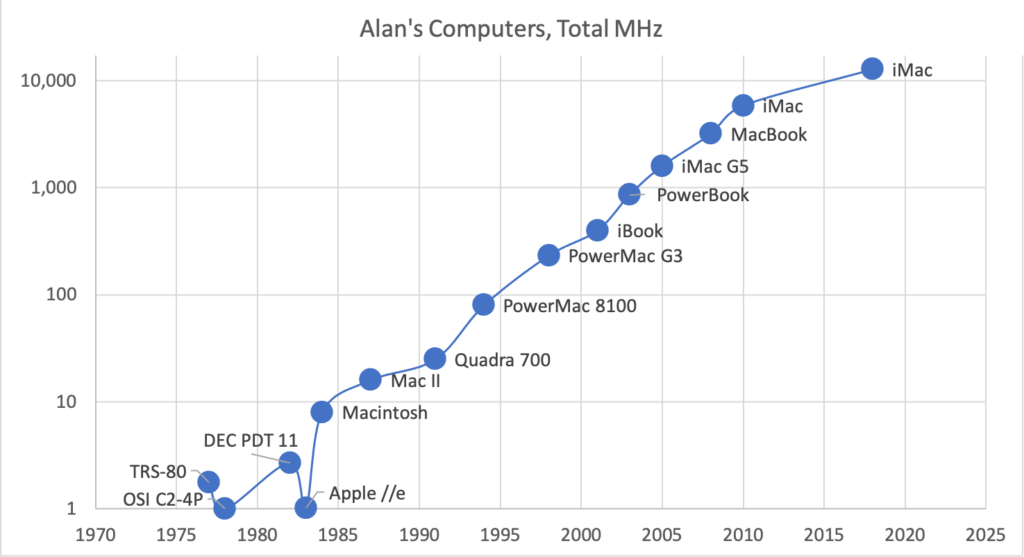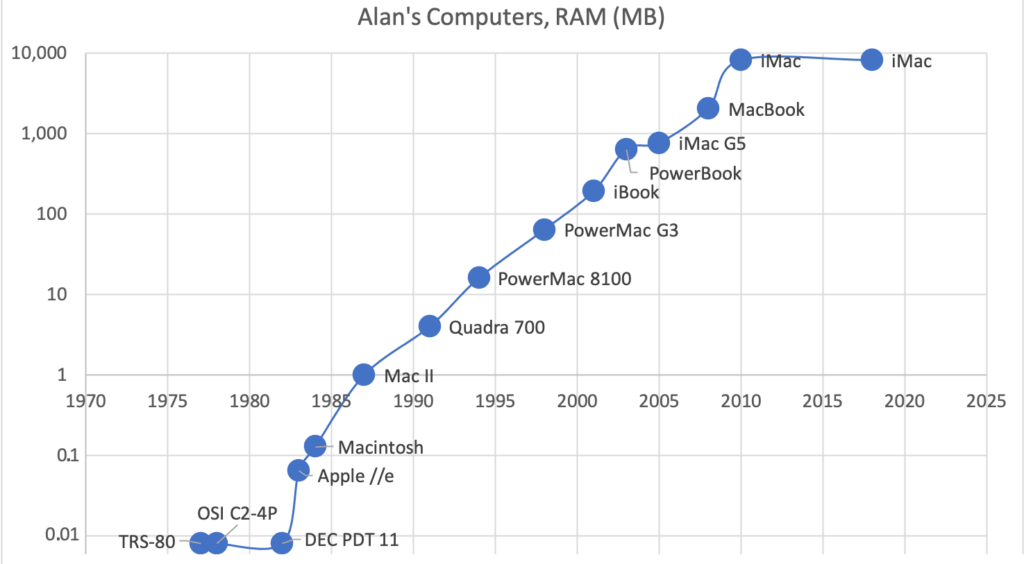The previous post on the Future of the Connectome alluded to how Moore’s Law would likely make the seemingly impossible mapping of the human brain’s 100 trillion synapses possible in the somewhat-but-not-too-distant Future. In much the same way that it made the mapping of the 6 billion DNA letters of the human genome possible in under twenty years after that project’s conception.
Moore’s law is one of the main tools in any Future distributor’s toolbox. As such, it will no doubt come up in many future posts. So what is it?
To quote from the historical source, Intel, which Gordon Moore co-founded:
Moore’s Law is the observation that the number of transistors on an integrated circuit will double every two years with minimal rise in cost. Intel co-founder Gordon Moore predicted a doubling of transistors every year for the next 10 years in his original paper published in 1965. Ten years later, in 1975, Moore revised this to doubling every two years. This extrapolation based on an emerging trend has been a guiding principle for the semiconductor industry for close to 60 years.
It’s even more than that though. A simplified and extrapolated version of Moore’s law is “technology gets exponentially* better, faster and cheaper as time goes by.” The practical effect of Moore’s law is that anything that seems technologically impossible won’t be given enough time (“Future Distribution 101”).
A few relevant personal examples. Keep in mind that the exponentiality of Moore’s Law requires the Y (vertical) axis of any Moore’s law-related graph to be exponential as well.
First off, personal genomics. In 2001 it cost about $100 million dollars to sequence a single human genome. 20 years later, it cost under $1000.

Next, two even more personal examples. Alan’s first computer, in 1977, was a Radio Shack TRS-80. Its CPU (processor) speed was 1.77MHz. 40 years later, Alan’s iMac had four processors for a total speed of 12.8 GHz (12,800MHz).

That same TRS-80 had 8KB (8 kilobytes) of RAM (random access memory). 40 years later, Alan’s iMac had 8GB (8 million KB).

Finally from a 2015 New York Times article about Moore’s law and Intel CEO Brian Krzanich:
Krzanich said Intel engineers did a rough calculation of what would happen had a 1971 Volkswagen Beetle improved at the same rate as microchips did under Moore’s Law: “Here are the numbers: [Today] you would be able to go with that car 300,000 miles per hour. You would get two million miles per gallon of gas, and all that for the mere cost of 4 cents!”
Thomas L. Friedman, Moore’s Law Turns 50, New York Times, May 13, 2015
*exponentially in the literal, mathematical sense (in this case doubling ever period), not just the more recent colloquial meaning of “very rapidly.”